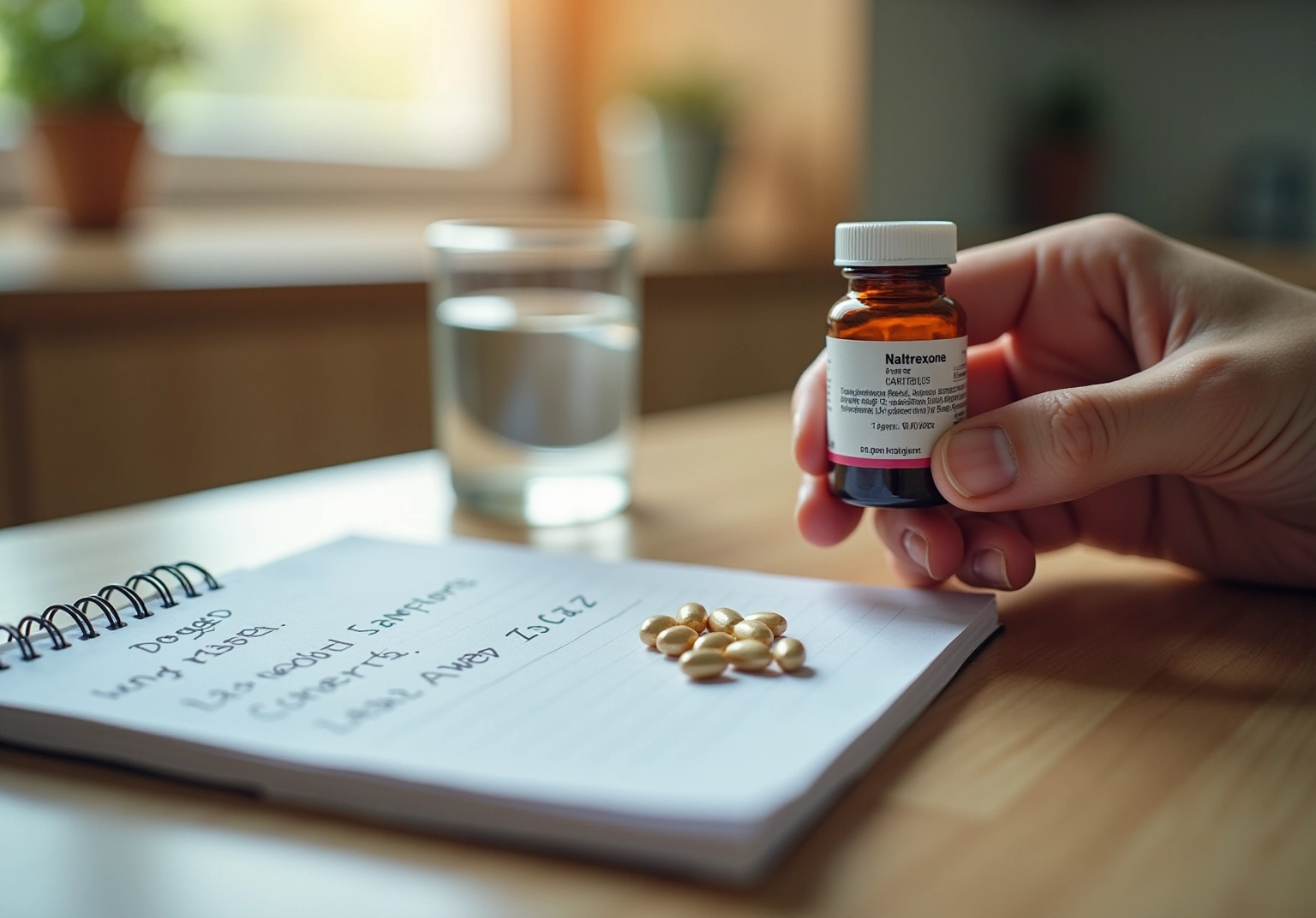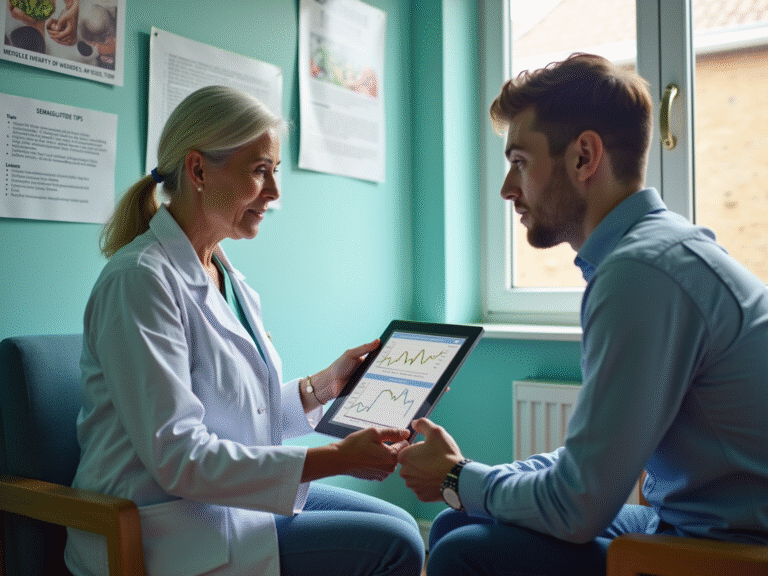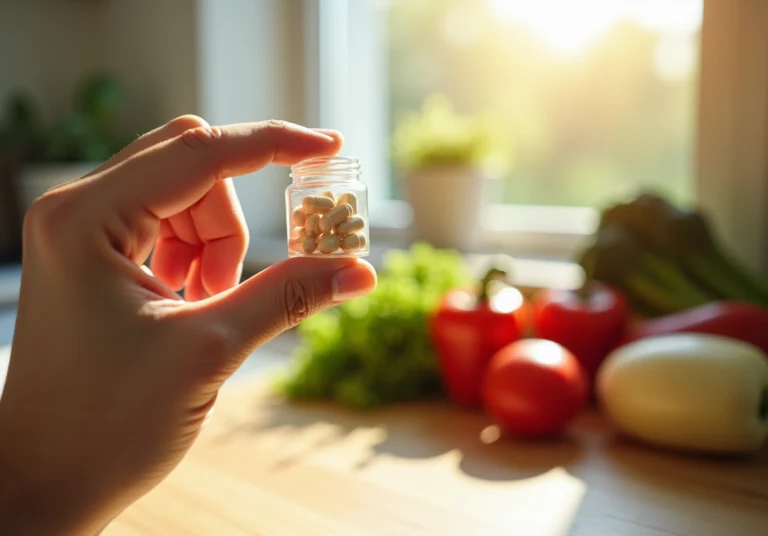4 Steps to Use Low Dose Naltrexone for Long COVID Effectively
Overview
This article presents a four-step approach to effectively utilizing low-dose naltrexone (LDN) for managing long COVID symptoms. It emphasizes the critical aspects of proper dosing, timing, and monitoring of side effects. By explaining how LDN can regulate the immune system and reduce inflammation, the article highlights its potential to alleviate persistent symptoms such as fatigue and pain. Furthermore, it underscores the necessity of consulting healthcare providers to develop personalized treatment plans, ensuring that individuals receive the most appropriate care for their needs.
Introduction
Low-dose naltrexone (LDN) is emerging as a beacon of hope for those grappling with the lingering effects of long COVID, a condition that continues to affect millions worldwide. This treatment, traditionally employed for opioid addiction, showcases unique properties at lower doses that may alleviate debilitating symptoms such as fatigue, pain, and cognitive dysfunction. Furthermore, as interest in LDN grows, so does the question: How can individuals effectively navigate the complexities of obtaining and administering this promising therapy while managing potential side effects?
Understand Low-Dose Naltrexone and Its Role in Long COVID
Low-dose naltrexone for long COVID is traditionally used in higher doses for opioid addiction treatment, but it exhibits distinct properties at lower doses (ranging from 1.5 mg to 4.5 mg) that may significantly benefit individuals struggling with long COVID. By temporarily obstructing opioid receptors, low-dose naltrexone for long COVID encourages the production of endorphins and other neuropeptides, which can effectively regulate the immune system and reduce inflammation—two critical factors often disrupted in individuals suffering from long COVID.
Studies indicate that low-dose naltrexone for long COVID might assist in reducing ongoing symptoms like fatigue, pain, and cognitive dysfunction, making it a hopeful treatment choice for those experiencing the lasting aftermath of COVID-19. Notably, research shows that 85% of individuals with symptoms two months after the initial infection experienced ongoing symptoms one year later. Furthermore, ongoing clinical trials are exploring the efficacy of low-dose naltrexone for long COVID, underscoring its potential relevance.
While LDN is typically well-accepted, with only 11% of individuals reporting mild side reactions, it is crucial to comprehend these mechanisms and the timeline for therapeutic outcomes—often requiring several weeks to months to appear. This understanding is essential for integrating LDN into effective treatment approaches.
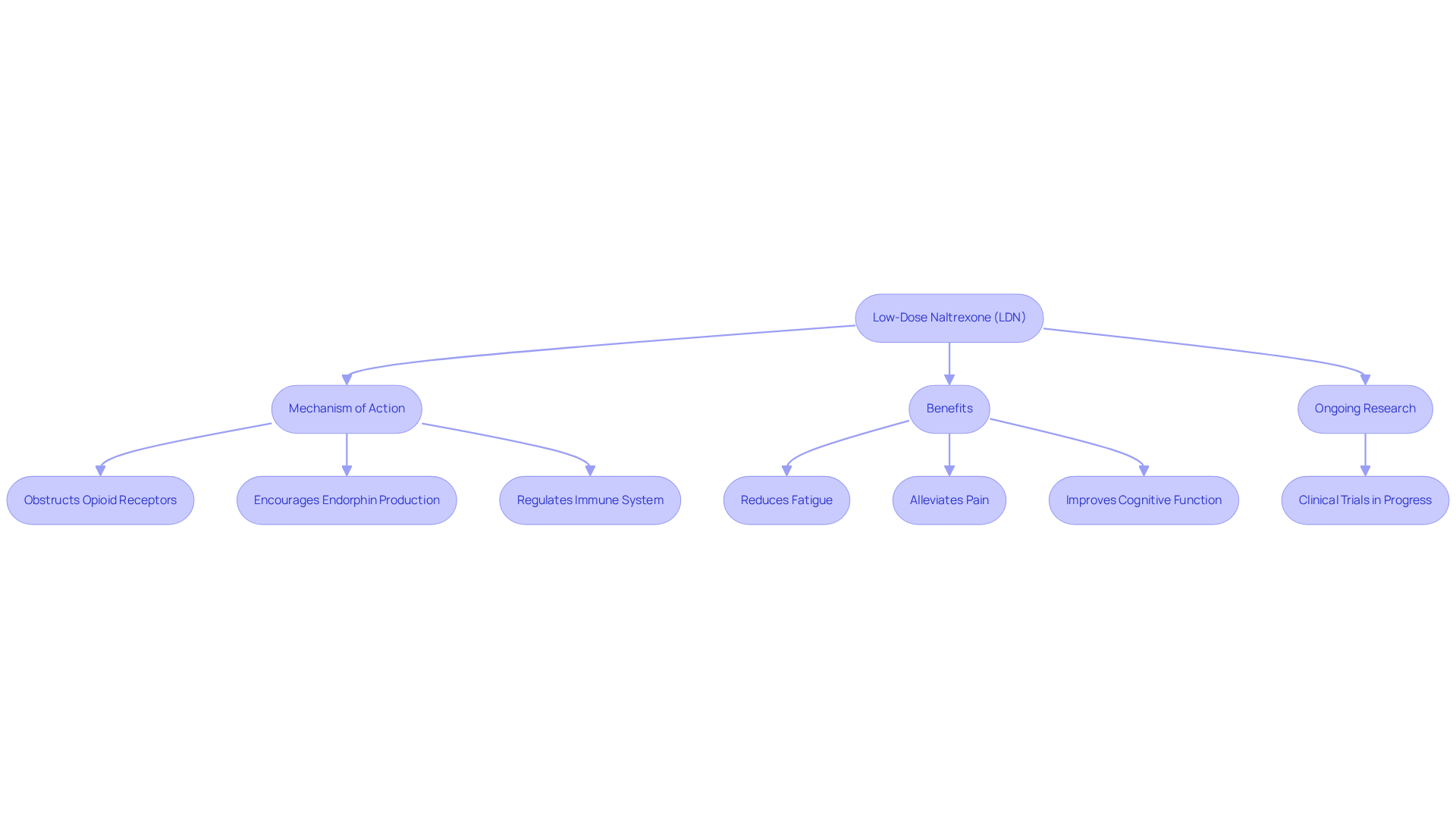
Obtain Low-Dose Naltrexone: Prescription and Sources
To obtain low-dose naltrexone (LDN), a prescription from a licensed healthcare provider is essential. Start by consulting your primary care physician or a specialist experienced in treating long COVID, who may recommend low dose naltrexone for long COVID. They will assess your symptoms and determine if LDN is a suitable option for you. Typically, the most common dose of LDN for conditions like fibromyalgia is 4.5 mg/day, but your healthcare provider will tailor the dosage to your specific needs.
Once prescribed, LDN is generally available through compounding pharmacies, which can create customized dosages tailored to individual needs. While some online pharmacies offer LDN, it is crucial to verify their legitimacy and ensure they require a valid prescription. Purchasing LDN from unverified sources can pose significant health risks, including potential side effects such as headaches and vivid dreams.
Additionally, discuss potential insurance coverage options for LDN with your healthcare provider, as coverage may vary by plan. Current trends indicate a growing number of compounding pharmacies are focusing on low dose naltrexone for long COVID, which reflects its increasing popularity as a treatment for various conditions. It is advised to remain on LDN for a minimum of three months prior to assessing its effectiveness, as some individuals may not observe enhancements until that time.
The expense of LDN is roughly $1 daily, with some individuals paying as little as 57 cents each day.
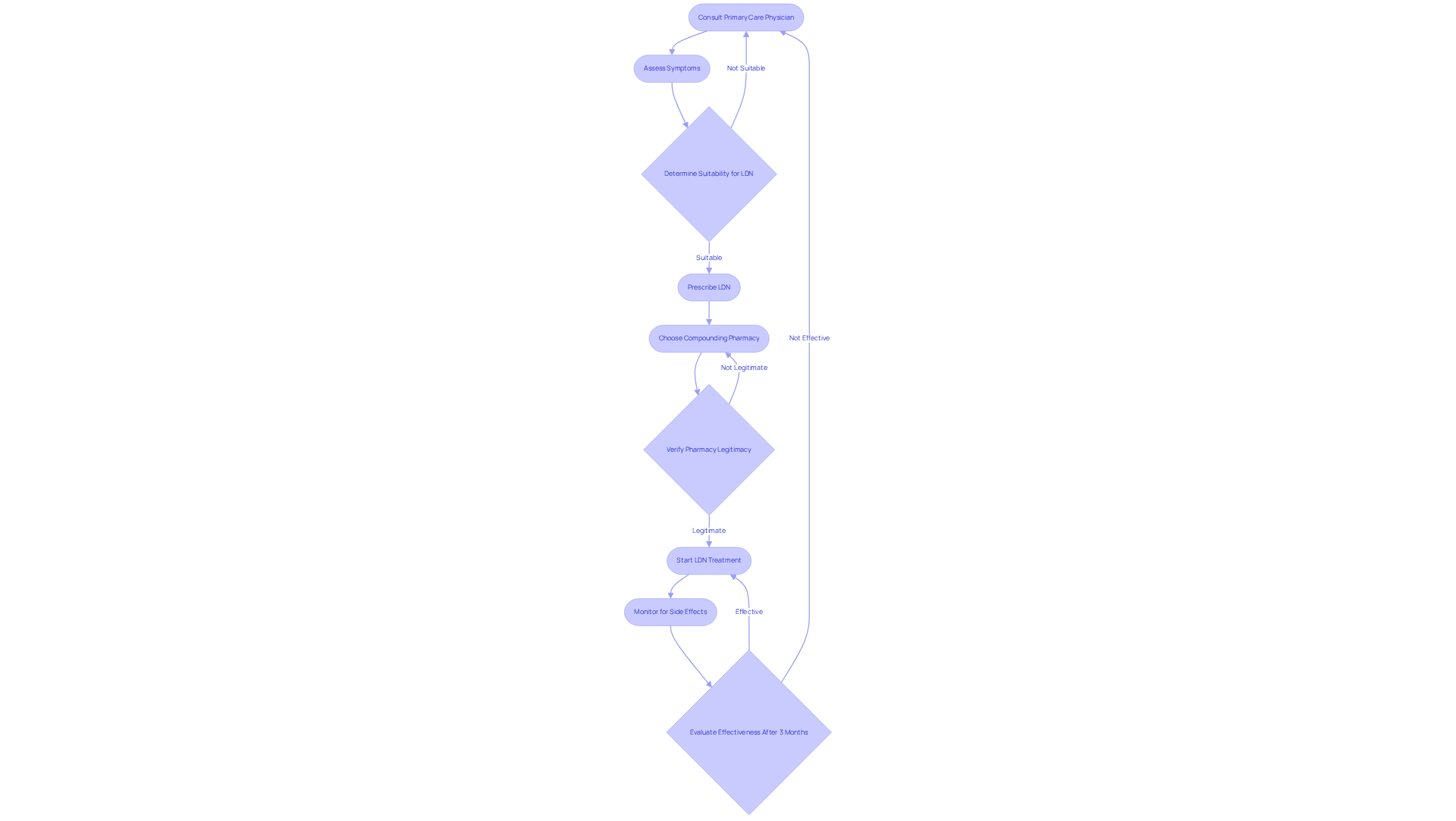
Administer Low-Dose Naltrexone: Dosage and Timing
When initiating low-dose naltrexone (LDN), it is advisable to start with a low dose, typically around 1.5 mg taken once daily. This initial dosage can be adjusted according to individual tolerance and response. Many individuals find that using LDN at night aligns with the body’s natural endorphin production cycle, potentially reducing issues such as vivid dreams or sleep disturbances. After a week of tolerance, the dosage can be gradually increased to 3 mg, and subsequently to a maximum of 4.5 mg as needed. Monitoring your body’s reactions and consulting with a healthcare provider knowledgeable about LDN for necessary adjustments is crucial.
Consistency in both timing and dosage is essential for achieving optimal therapeutic effects. Studies suggest that adhering to dosing schedules significantly influences treatment results, with many individuals experiencing improved symptoms when following a structured regimen. Notably, approximately 15-20% of adults with a confirmed or suspected SARS-CoV-2 infection experience long-term symptoms lasting over 3 months, emphasizing the importance of low dose naltrexone for long covid in their treatment.
Furthermore, an upcoming trial (NCT05946551) will investigate low dose naltrexone for long covid in relation to post-COVID fatigue syndrome (PCFS) with a sample size of 36 participants, emphasizing the ongoing research in this area. Additionally, 52% of individuals were identified as responders after 12 weeks of treatment, reinforcing the effectiveness of LDN. Negative reactions from LDN are usually minor and rarely mentioned, which can provide comfort to patients regarding the safety of this treatment.

Manage Side Effects: What to Expect and How to Cope
While low-dose naltrexone is generally well-accepted, some individuals may experience adverse reactions, particularly when starting the medication or adjusting dosages. Common reactions include:
- Vivid dreams
- Gastrointestinal disturbances
- Mild headaches
To manage these effects, consider:
- Taking LDN at night to reduce the impact of vivid dreams on your daily life
- Taking LDN with a small amount of food if gastrointestinal issues occur
- Staying hydrated and ensuring adequate rest to help alleviate headaches
If adverse reactions persist or become bothersome, it is advisable to consult your healthcare provider for guidance on dosage adjustments or alternative strategies. Being aware of potential side effects and having a management plan can significantly improve your experience with LDN.
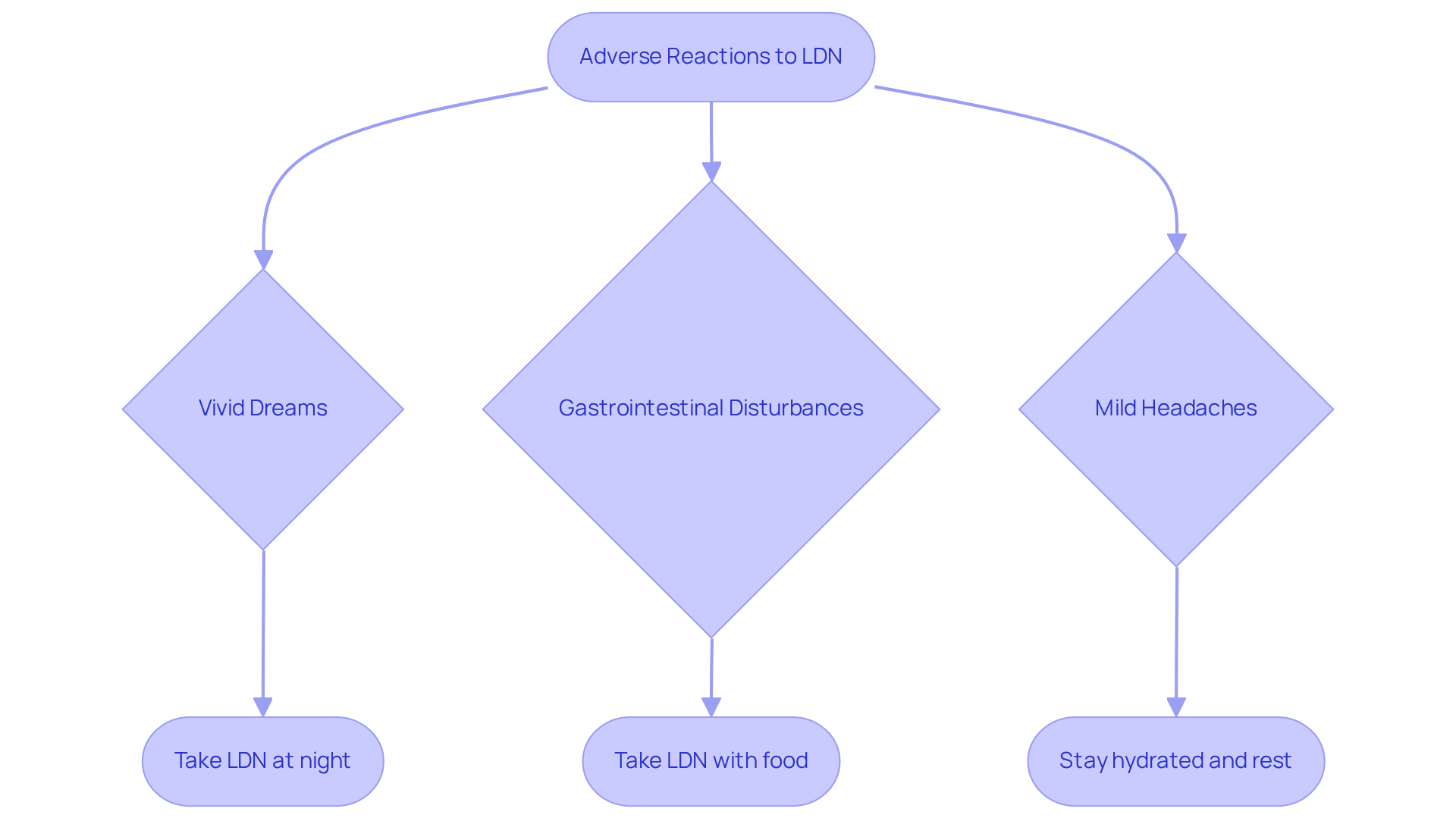
Conclusion
Low-dose naltrexone (LDN) offers a promising avenue for individuals grappling with long COVID, providing a unique mechanism that may help alleviate persistent symptoms. By harnessing its ability to modulate the immune system and reduce inflammation, LDN stands out as a potential treatment addressing the underlying issues faced by many post-COVID patients. Understanding its role, proper administration, and management of side effects is crucial for maximizing its benefits.
The article outlines essential steps for effectively using low-dose naltrexone, including:
- Obtaining a prescription
- Determining the appropriate dosage
- Managing any potential side effects
It highlights the importance of consulting healthcare providers to tailor the treatment to individual needs. Adhering to prescribed regimens is emphasized for optimal results. Ongoing research and clinical trials further reinforce the significance of LDN as a viable option in the long COVID treatment landscape.
Recognizing the potential of low-dose naltrexone not only empowers patients seeking relief from long COVID symptoms but also encourages further exploration and acceptance of innovative treatments. As awareness grows, individuals are urged to engage in discussions with healthcare professionals about LDN, ensuring they are well-informed about its benefits, usage, and the importance of a structured approach to treatment. By taking proactive steps, those affected by long COVID can find hope and potentially reclaim their well-being.
Frequently Asked Questions
What is low-dose naltrexone and how is it used in relation to long COVID?
Low-dose naltrexone (LDN) is a medication traditionally used in higher doses for opioid addiction treatment. At lower doses (1.5 mg to 4.5 mg), it may benefit individuals with long COVID by temporarily blocking opioid receptors, which encourages the production of endorphins and neuropeptides that help regulate the immune system and reduce inflammation.
What symptoms of long COVID might low-dose naltrexone help alleviate?
Low-dose naltrexone may assist in reducing ongoing symptoms of long COVID such as fatigue, pain, and cognitive dysfunction.
What percentage of individuals with long COVID symptoms continue to experience them a year after infection?
Research indicates that 85% of individuals who had symptoms two months after the initial COVID-19 infection experienced ongoing symptoms one year later.
Are there any ongoing studies regarding low-dose naltrexone for long COVID?
Yes, ongoing clinical trials are exploring the efficacy of low-dose naltrexone for treating long COVID, highlighting its potential relevance.
How well is low-dose naltrexone accepted among patients, and what side effects are reported?
Low-dose naltrexone is typically well-accepted, with only 11% of individuals reporting mild side reactions.
How long does it usually take for therapeutic outcomes from low-dose naltrexone to appear?
Therapeutic outcomes from low-dose naltrexone often require several weeks to months to manifest.
